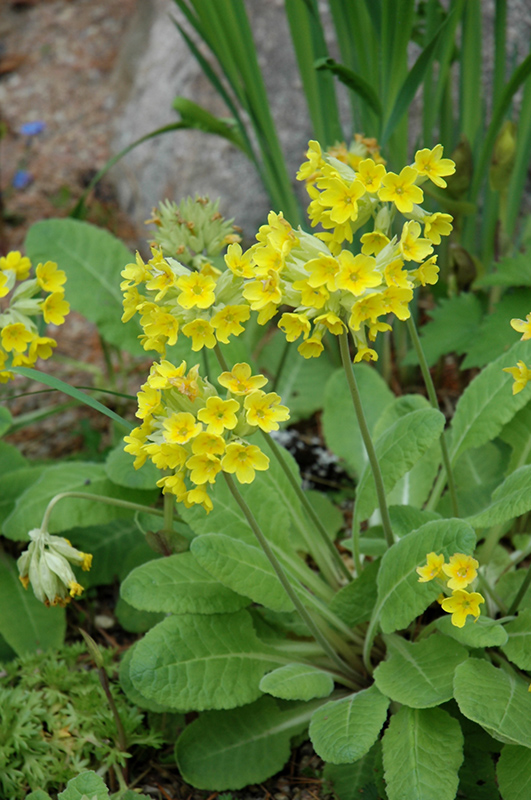Digging deeperPlant Library
Plant Height: 5 inches
Flower Height: 12 inches
Spacing: 6 inches
Sunlight:
![]()
![]()
Hardiness Zone: 4
Other Names: True Oxlip
Description:
This lovely selection produces upright stems with clusters of fragrant, butter yellow trumpet flowers with gold centers, above a rosette of bright green leaves in mid-spring; excellent in containers and window boxes
Ornamental Features
Oxlip Primrose features delicate clusters of lightly-scented buttery yellow trumpet-shaped flowers with gold throats rising above the foliage from mid to late spring. Its crinkled oval leaves emerge chartreuse in spring, turning green in color throughout the season.
Landscape Attributes
Oxlip Primrose is an herbaceous perennial with tall flower stalks held atop a low mound of foliage. It brings an extremely fine and delicate texture to the garden composition and should be used to full effect.
This is a relatively low maintenance plant, and is best cleaned up in early spring before it resumes active growth for the season. It is a good choice for attracting bees to your yard. It has no significant negative characteristics.
Oxlip Primrose is recommended for the following landscape applications;
- Mass Planting
- Rock/Alpine Gardens
- Border Edging
- General Garden Use
Planting & Growing
Oxlip Primrose will grow to be only 5 inches tall at maturity extending to 12 inches tall with the flowers, with a spread of 8 inches. When grown in masses or used as a bedding plant, individual plants should be spaced approximately 6 inches apart. Its foliage tends to remain low and dense right to the ground. It grows at a fast rate, and under ideal conditions can be expected to live for approximately 5 years. As an herbaceous perennial, this plant will usually die back to the crown each winter, and will regrow from the base each spring. Be careful not to disturb the crown in late winter when it may not be readily seen!
This plant does best in partial shade to shade. It prefers dry to average moisture levels with very well-drained soil, and will often die in standing water. It is not particular as to soil type or pH. It is somewhat tolerant of urban pollution, and will benefit from being planted in a relatively sheltered location. Consider applying a thick mulch around the root zone in both summer and winter to conserve soil moisture and protect it in exposed locations or colder microclimates. This species is not originally from North America. It can be propagated by division.
A NetPS Plant Finder tool
This Plant Library is for informational purposes only. We may or may not carry the items listed. During many times of the year, we may carry many more plants in our store than are listed in the Plant Library. Please contact us directly at 303-690-4722 or visit our store for current availability and for assistance.
